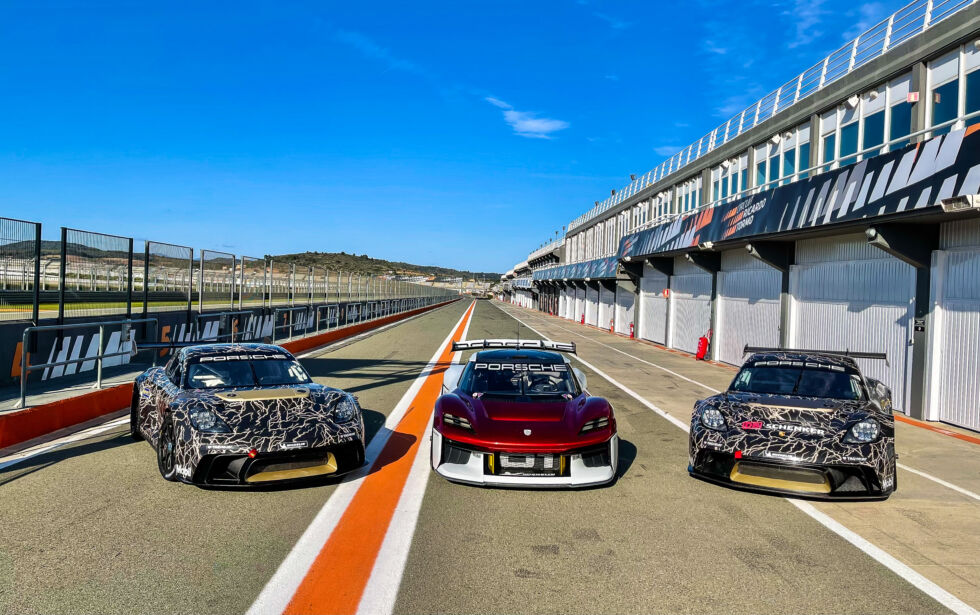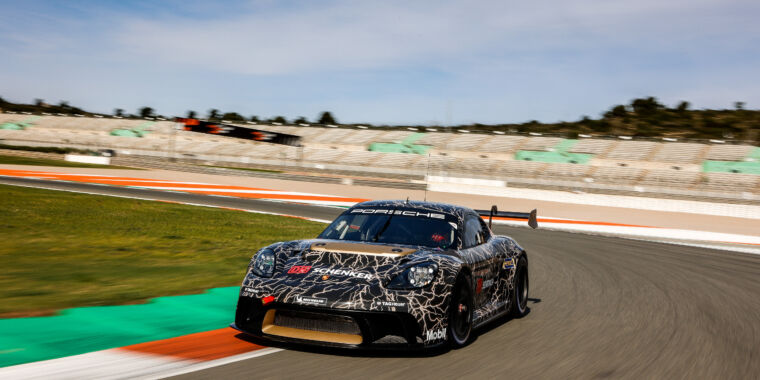
Porsche
Porsche is getting closer and closer to selling a battery-electric sports car. It’s not quite there yet, but after showing off the Mission R concept in 2021, the company is now hard at work making sure the electric powertrain technology the concept was supposed to showcase will stand up to the work. that is expected of a Porsche sports car. The company achieves this with a pair of 718 Cayman GT4 ePerformance cars.
You’d normally expect to find a flat-six engine behind the cockpit of a Cayman GT4 (whether it’s one of the road cars or the motorsport-ready Clubsport variant). In the ePerformance version, the car’s battery lives there.
It’s an 82 kWh pack designed to provide sustained performance for the duration of a sprint race – between 25 and 40 minutes. Porsche has also increased the voltage compared to its other BEV (the 800V Taycan), as the 718 GT4 ePerformance (and the Mission R) will run at 900V. This allows the car to quickly charge DC power from 5 to 80 percent in just 15 minutes.
How fast and powerful the 718 GT4 ePerformance is depends on the mode you’ve set it to. For qualifying, the battery can deliver up to 985 horsepower (735 kW), to a permanently energized synchronous motor on each axle. In race mode, the goal isn’t to provide a single lap of speed, but to deliver sustained performance for at least half an hour, and battery power is reduced to a still hefty 603 horsepower (450 kW).
“The integration of oil cooling has had a significant impact on the vehicle concept,” explains Björn Förster, GT4 ePerformance project manager. “With aerodynamics and thermodynamics experts, as well as high-voltage and bodywork specialists, the development team has created an architecture for the first time to exploit the full potential of the battery cells, as there is no thermal derating. In this way, the power remains in race mode constant for half an hour,” he said.
There are a few extra details about the ePerformance that differ from other Cayman GT4s. The car is 5.5 inches (140 mm) wider and the body is made of natural fiber composites. Other components use recycled carbon fiber as Porsche looks for ways to reduce emissions from its manufacturing processes. Even the tires contain a high degree of recycled materials.

Porsche
If you’re lucky enough to be at the Goodwood Festival of Speed in England in June, you’ll get the chance to see the 718 Cayman GT4 ePerformance’s first public outing as it does its best on the hill climb. It’s a bigger, heavier car than VW’s ID.R racer, but in qualifying mode the Cayman will also be significantly more powerful, so there’s an outside possibility that VW’s record isn’t safe.
After that, Porsche will take its pair of test cars to various events in Europe before bringing them to the US in 2023. The idea is not just to show off a cool new toy, but to show Porsche’s racing customers what the future is starting to look like. looks like.
“The 718 Cayman GT4 ePerformance paves the way for Porsche customer racing with electrically powered race cars. As a first step, we will unveil this concept to our global partners,” said Oliver Schwab, Project Manager of the 718 Cayman GT4 ePerformance. “With drivers, teams, organizers, authorities and other interested parties, we are also collecting ideas for future Porsche racing formats.”

